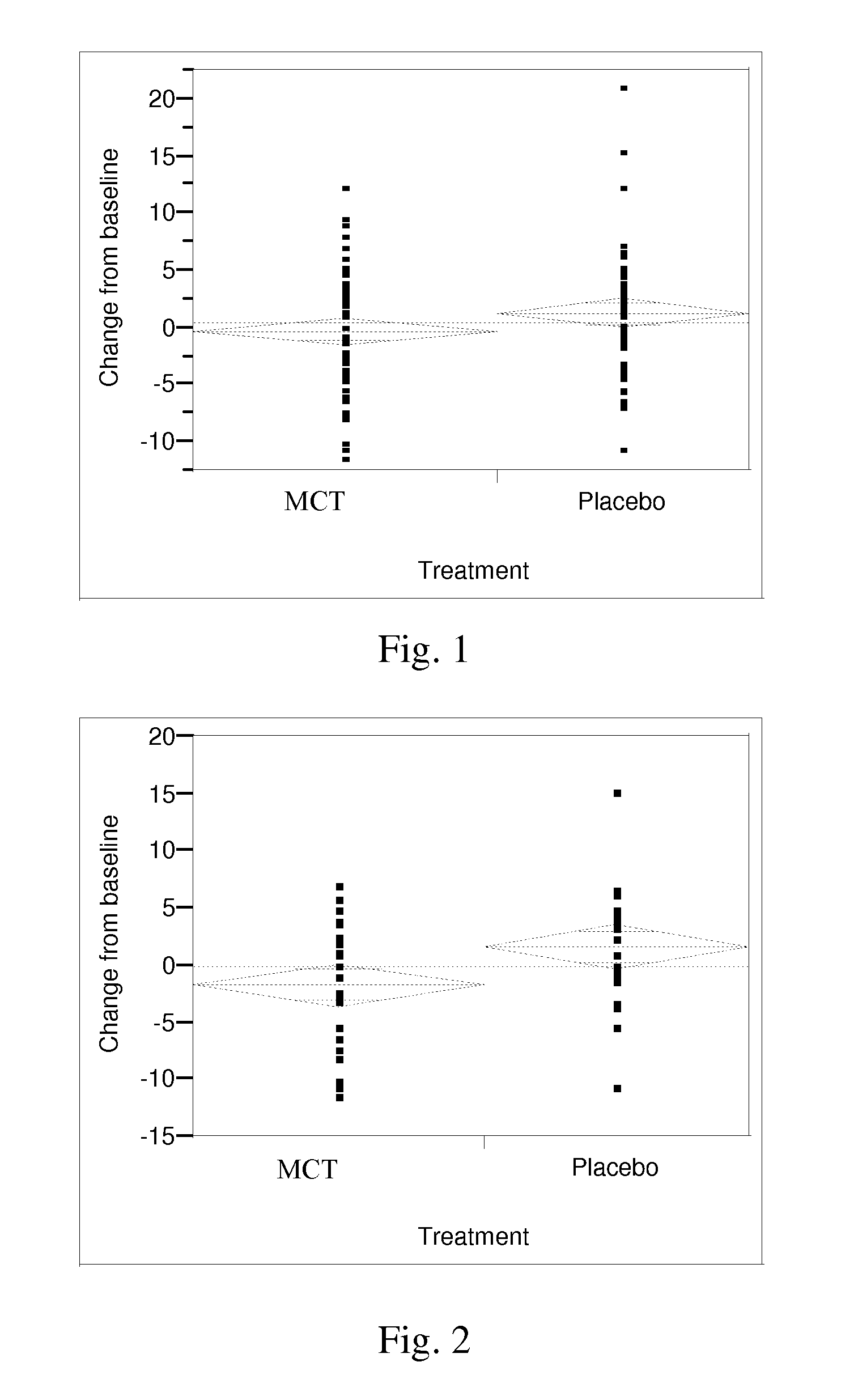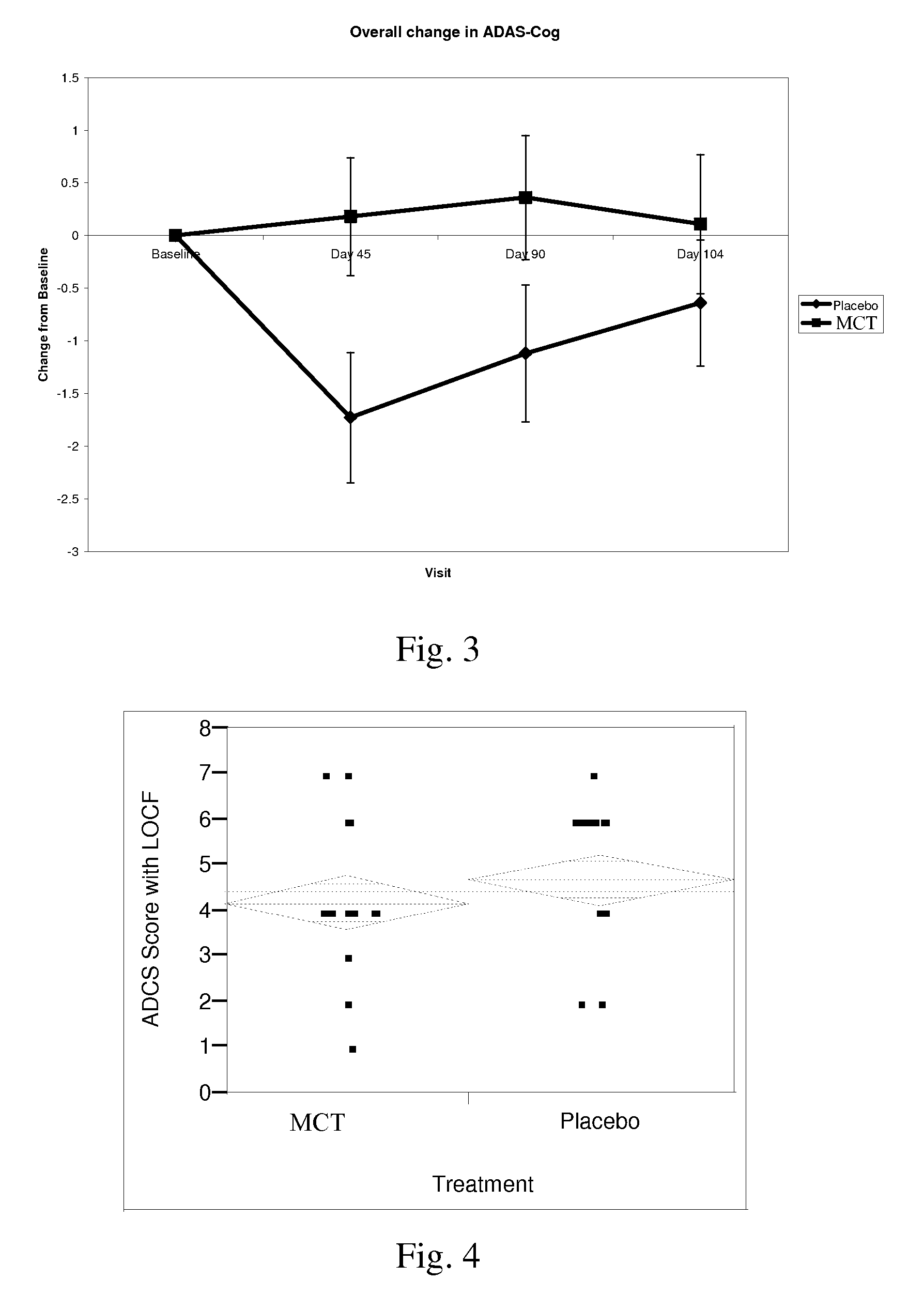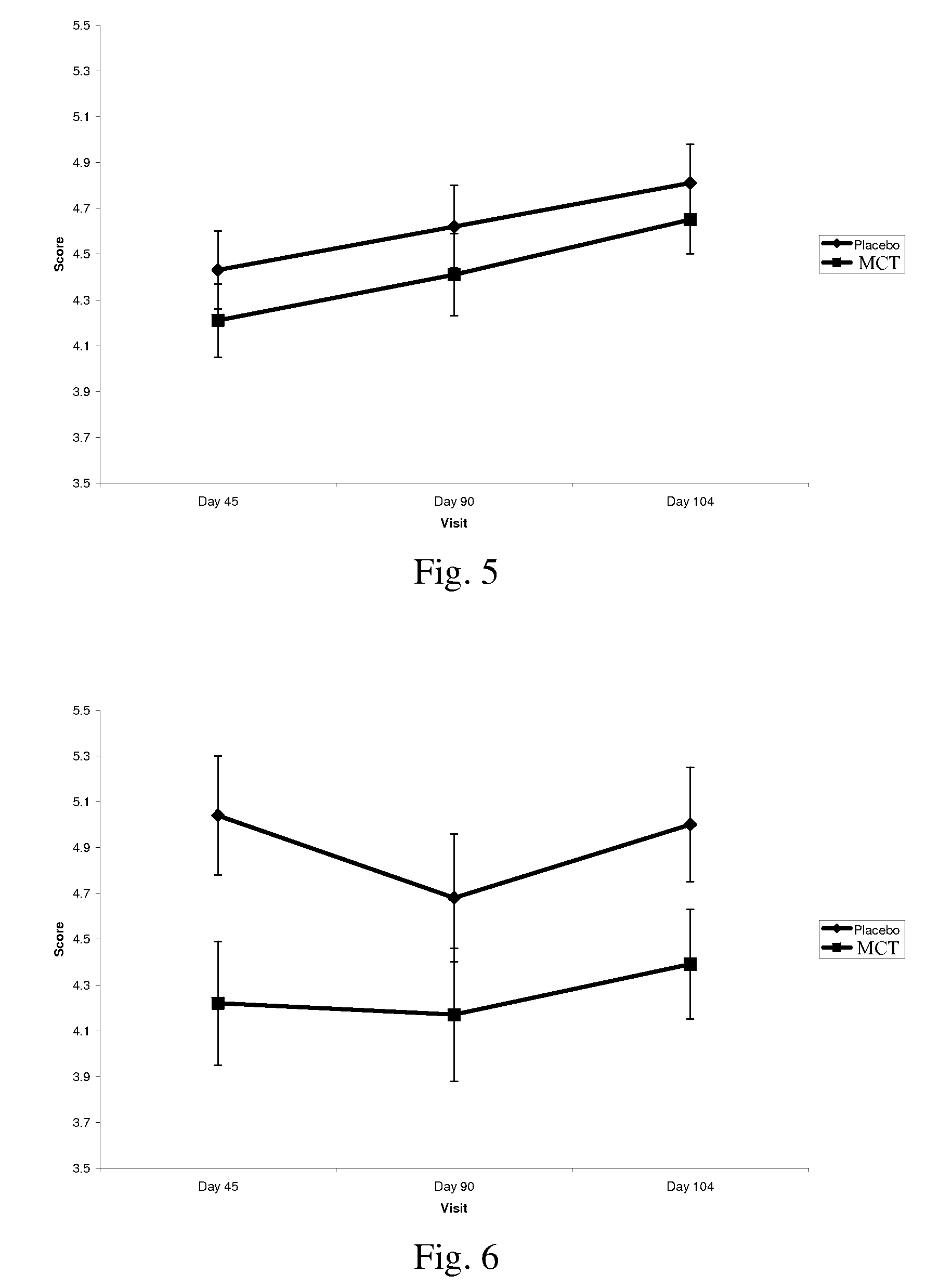Compositions and methods for improving or preserving brain function
a brain function and composition technology, applied in the field of mammalian nutrition, can solve the problems of deterioration of various aspects of physiology in normal adults, memory performance, associated cognitive impairment, etc., and achieve the effect of improving performance in one or, reducing, preventing, or delaying the decline of one or mor
- Summary
- Abstract
- Description
- Claims
- Application Information
AI Technical Summary
Benefits of technology
Problems solved by technology
Method used
Image
Examples
example 1 nutritional drink
[0192] Nutritional drinks are prepared comprising the following ingredients: emulsified MCT in the range of 5 to 100 g / drink, L-carnitine in the range of 0.1 to 1 gram / drink, mix of vitamins and minerals at recommended daily levels, and a variety of flavorings.
example 2
Additional Formulations
[0193] Additional formulations can be in the form of Ready to Drink Beverages, Powdered Beverages, Nutritional Drinks, Food Bars, Puddings, other confections and the like. Formulations for such are clear to those skilled in the art.
[0194] A. Ready to Drink Beverage Ready to Drink Beverages are prepared so as to comprise the following ingredients: emulsified MCT in the range of 5-100 g / drink, L-carnitine in the range of 100-1000 mg / drink, and a variety of flavorings and other ingredients used to increased palatability, stability, etc.
[0195] B. Powdered Beverages MCT may be prepared in a dried form, useful for food bars and powdered beverage preparations. A powdered beverage may be prepared so as to comprise the following components per drink: dried emulsified MCT in the range of 10-50 g, L-carnitine in the range of 250-500 mg, sucrose in the range of 8-15 g, maltodextrin in the range of 1-5 g, flavorings 0-1 g and other ingredients used to increased palatabil...
example 3
Treating Alzheimer's Disease with Medium Chain Triglycerides
[0201] This example examined whether hyperketonemia improves cognition or memory in individuals with memory disorders. The goal of this trial was to test the hypothesis that elevation of serum beta-hydroxybutyrate (BHB) levels through a large oral dose of medium chain triglycerides will improve cognition, memory and attention performances in individuals with Alzheimer's disease (AD) or Mild Cognitive Impairment (MCI) as described below and in Reger, et al. (Neurobiology of Aging 25 (2004) 311-314).
[0202] Participants. The sample consisted of 20 individuals with memory disorders recruited from Western Washington. Potential subjects were excluded if they had diabetes mellitus, hypoglycemia, major psychiatric disorders, or other major medical or neurological disorders such as hypertension, hypotension, cardiac problems, or COPD. In addition, patients were excluded from the study if they were taking medications with CNS effect...
PUM
| Property | Measurement | Unit |
|---|---|---|
| Fraction | aaaaa | aaaaa |
| Fraction | aaaaa | aaaaa |
| Fraction | aaaaa | aaaaa |
Abstract
Description
Claims
Application Information
 Login to View More
Login to View More - R&D
- Intellectual Property
- Life Sciences
- Materials
- Tech Scout
- Unparalleled Data Quality
- Higher Quality Content
- 60% Fewer Hallucinations
Browse by: Latest US Patents, China's latest patents, Technical Efficacy Thesaurus, Application Domain, Technology Topic, Popular Technical Reports.
© 2025 PatSnap. All rights reserved.Legal|Privacy policy|Modern Slavery Act Transparency Statement|Sitemap|About US| Contact US: help@patsnap.com



